If you looked at the optics market, you’d be hard-pressed to find a more dominant option than the LPVO. Pretty much everyone makes one.
Companies like EOTech, which was famous for reflex sights, make LPVOs. Trijicon, from whom prism-based ACOG made its name, also makes several lines of LPVOs. In fact, the only holdout is Aimpoint.
A good LPVO can be an absolutely awesome tool for your rifle to have. With that said, it’s not all sunshine and rainbows. There are some downsides to the LPVO, which have become more apparent to me as I’ve gotten back to decent distance shooting and begun competing under a clock.
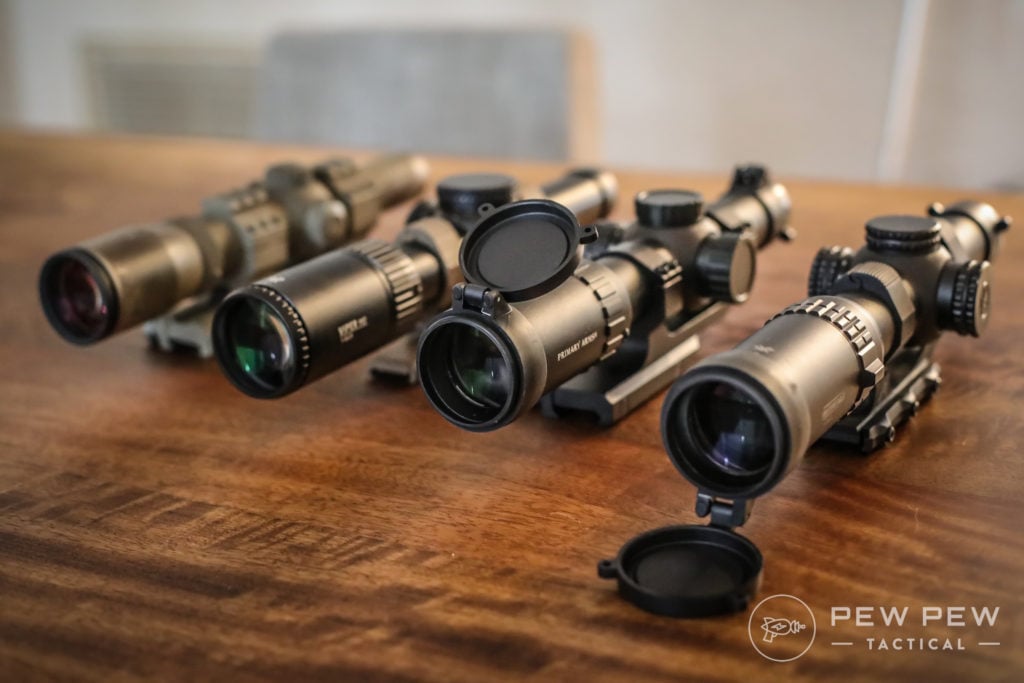
Recently, I’ve gotten regular access to a 300-yard range and began shooting competitively. This experience has shown me the downsides, so let’s discuss why LPVOs might not always be the best choice…
Table of Contents
Loading…
What’s an LPVO?
We’ve typed that acronym enough to confuse new shooters, so let’s explain it briefly.
An LPVO is a low-power variable optic. Traditionally, most optics have a range of magnification, and with LPVOs, that range starts at 1X, or arguably 1.5X. The lower starting range then expands from anywhere from 3X to 12X.
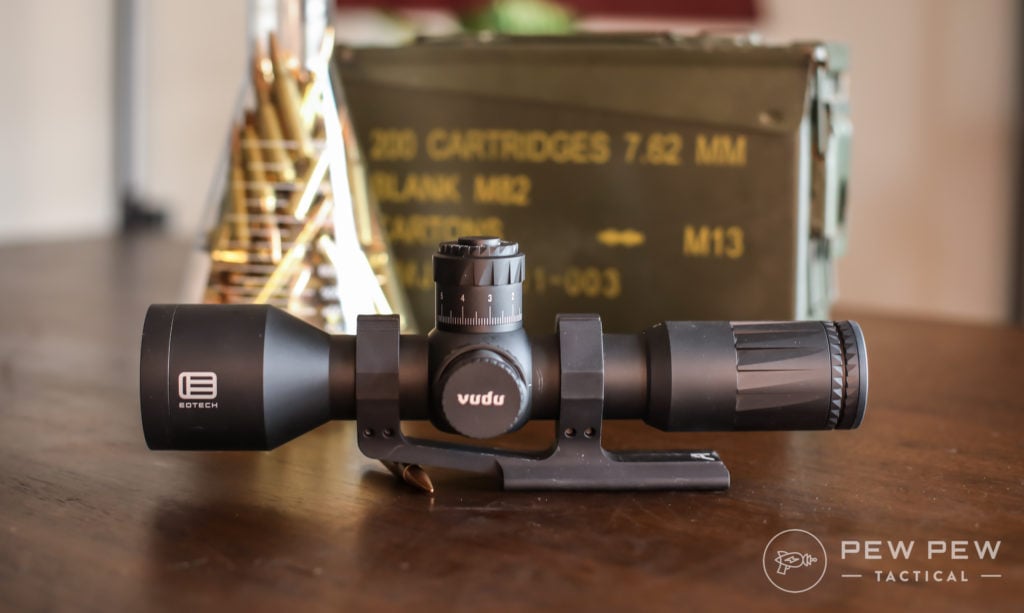
The current most common LPVOs tend to hover around 6X, 8X, and 10X. They are somewhat new in the modern world, but LPVOs existed as far back as the 1920s, but no one called them that.
Our first modern LPVO was from Schmidt and Bender, called the Short Dot. The Short Dot exited because special operations needed an optic to bridge the gap between the red dot and the rifle scope.
After Somalia, the value of the LPVO was made clear for multilayered, asymmetric environments. The fervor for the LPVO was a bit slow in the regular world, and S&B wasn’t selling them cheaply. However, as 3-Gun blew up, the LPVO followed.
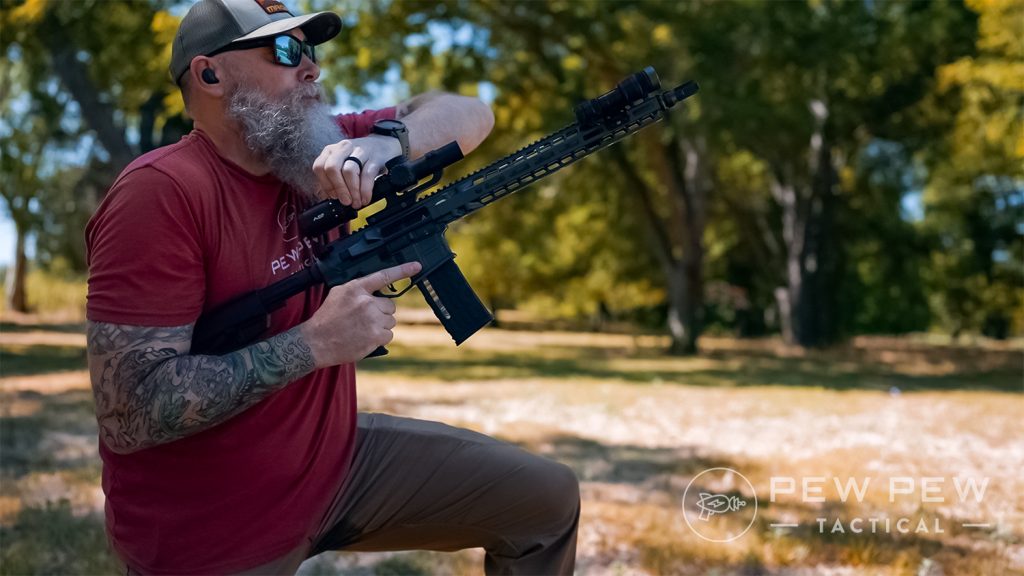
3-Gun only allowed you to use one optic, so the LPVO made a ton of sense. At the same time, the LPVOs were getting better, and more began popping up for military usage.
Now, you can’t throw a stick in a gun store without hitting an LPVO. With market dominance comes a lot of misconceptions. While LPVOs are great optics, they have problems that aren’t often discussed.
I think it’s time to dive into those problems.
Downsides to LPVOs
Price
Good LPVOs are expensive. Arguably, the current king of the crop is the Vortex Razor Gen 3 1-10X.
Prices fluctuate and change, but let’s use Amazon as an example. As the biggest marketplace on earth, it represents what many new optics owners would use. On Amazon, the Razor costs $2,399. It’s the king of the castle, so the cost will be high.
Prices accurate at time of writing
Prices accurate at time of writing
-
25% off all OAKLEY products - OAKLEY25
Copied! Visit Merchant
What about a red dot or prism? The Aimpoint T2, a proven and respectable red dot, costs $902, while the Trijicon ACOG costs $1,129. Not to mention, the Aimpoint and ACOG come with mounts, while the Razor does not.
Those optics are pricey, but the Razor is much more expensive. For the price of the Aimpoint or Trijicon, you are getting into “mid” range quality with an LPVO.
Prices accurate at time of writing
Prices accurate at time of writing
-
25% off all OAKLEY products - OAKLEY25
Copied! Visit Merchant
Expect to spend another $300 on a good mount, which increases the price. Arguably you are getting more optic for the money. Additional magnification levels make the optic more expensive and more complicated to produce.
Weight & Size
By the same metric, more complicated and more magnification creates a larger, heavier optic.
That’s still a downside worth considering, even if the weight and size are worth the squeeze to you.
Feeling the difference a 1-8 LPVO made on my 20-inch AR made me revert to a prism optic. It’s annoying, at least to me, to deal with extra weight when I realized the benefits weren’t worth the squeeze for most of the shooting I did with that rifle.
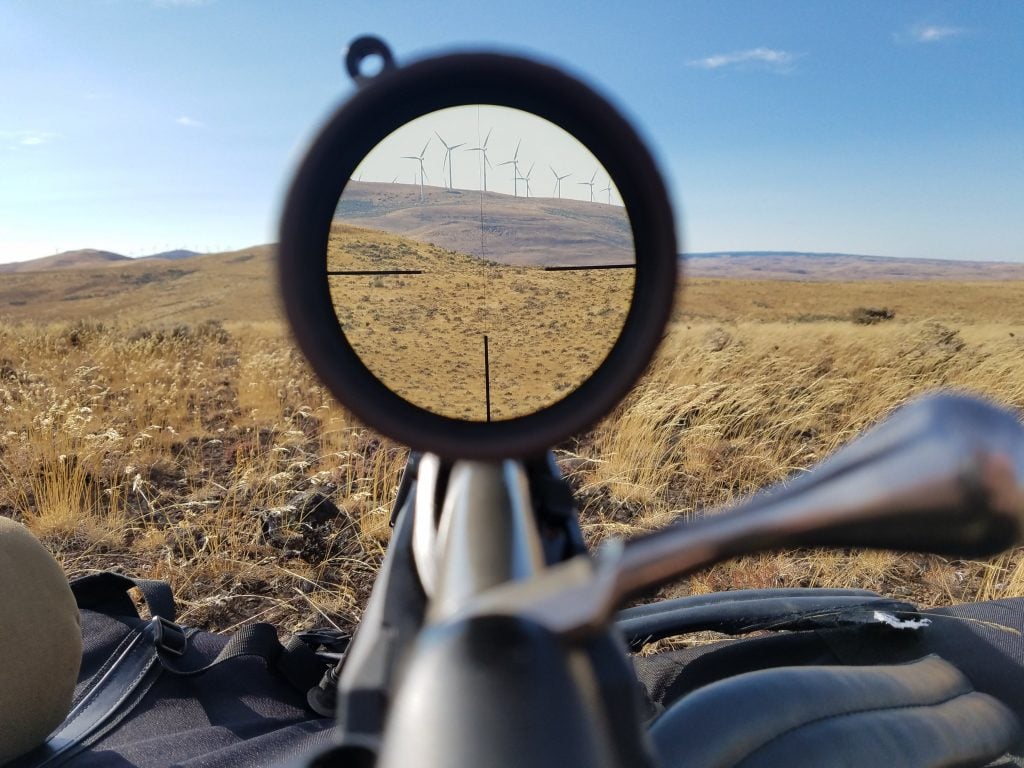
One of the lightest 1-8X LPVOs, the PL PLxC, weighs almost 17 ounces. The Aimpoint T2 that we mentioned earlier… it weighs 3.7 ounces with a battery.
Again, you have to factor in the mount with the LPVO. Primary Arms makes a lightweight mount at 7.3 ounces, about 3 ounces lighter than most mounts. Even the chunky ACOG only weighs 15 ounces with the Trijicon included mount.
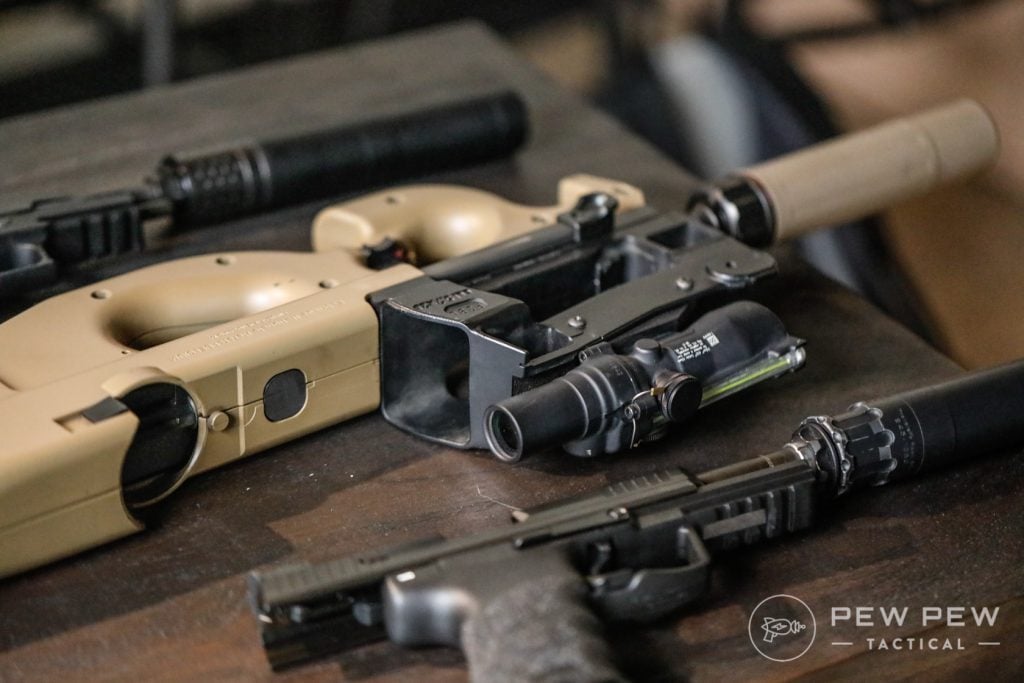
The length doesn’t give much room on your rail for backup sights. This requires you to run an offset sighting system or remove your optic to stand up your rear sight.
To get those magnification settings, you have to accept a hefty optic.
Eye Box & Eye Relief
As we get past the logistical problems of the LPVO, we get into the more inherent issues with LPVOs.
These optics aim to provide a versatile design that allows you to shoot at distances anywhere from five yards to 800 yards, depending on optics, rifle, etc. At the same time, LPVO manufacturers try to make their optics small and light to fit the modern carbine.
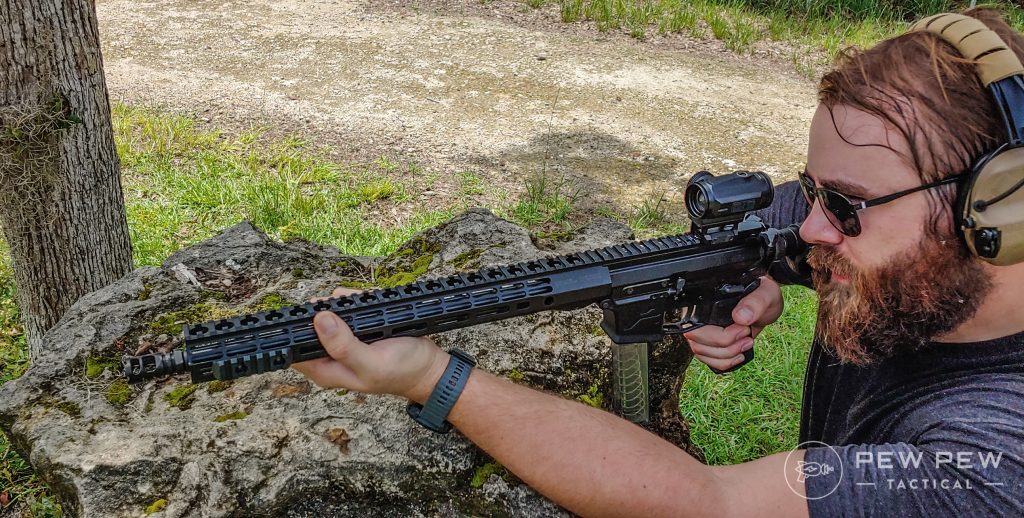
When you start shopping for a low-power variable optic, you’ll likely read they are as fast as red dots at 1X! Oof, well, LPVOs can be fast, surprisingly so, but they aren’t as fast as a red dot.
Because this is a traditional scope, the optic has a particular eye relief and eye box. The eye box is the area behind the scope where you can effectively see through the scope without scope shadow.
A small eye box requires almost perfect alignment with the eye box of the scope. The larger the eye box, the more room for error you get. With a large eye box, your head position can be slightly off-center, with no problems.
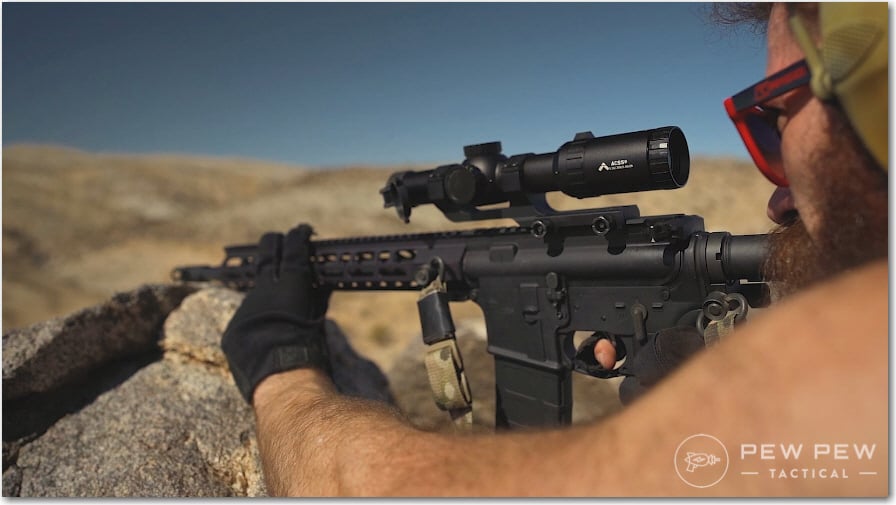
The size of your eye box is controlled by the size of an optic’s exit pupil. To figure out the exit pupil, you must divide the objective lens by the magnification.
If you’re like me and follow military armament, you might know the Marine Corps is issuing their infantry the VCOG, a 1-8X optic. At the same time, the Marine Corps is issuing designated marksmen the Leupold Mk 4 2.5-8x.
You might ask what the point of the Mark 4 is for designated marksmen. It has the same magnification as the VCOG. The difference between the two optics is that the Mark 4 has a 36mm objective lens.
Prices accurate at time of writing
Prices accurate at time of writing
-
25% off all OAKLEY products - OAKLEY25
Copied! Visit Merchant
This creates an exit pupil of 14.4mm at 2.5x and a 4.5mm exit pupil at 8X. The VCOG, by comparison, has an exit pupil of 10.16mms at 1X and 3.56mms at 8X. This gives you a little more wiggle room when mounting up with a Mark 4.
Additionally, any magnified optic has eye relief. Eye relief is the distance, often measured in inches, from the rear of the optic to the eye of the shooter. If an optic has an eye relief of 3.5 inches and you mount your gun with your eye 3.7 inches away from the optic, you’ll see scope shadow.
Even at 1X, a Low Power Variable Optic has an eye relief. Admittedly, every LPVO I’ve ever shot with has way better eye relief than an ACOG, but red dots have unlimited eye relief.
For close range, fast shooting, and transitions, the red dot is still way faster and more forgiving.
Parallax
All optics are affected by parallax. Even parallax-free optics aren’t really parallax-free. They meet industry standards for being parallax-free, but that’s industry marketing talk for “basically” parallax-free.
Parallax is the observed movement of an object due to a change in perspective. The object isn’t actually moving.
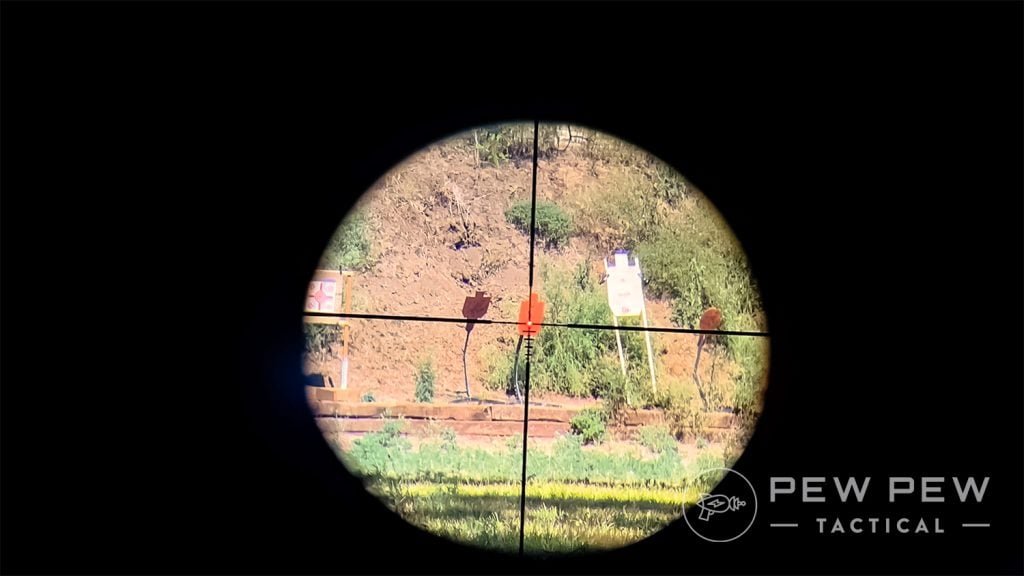
For fun, hold your index finger up and close one eye. Observe the background behind your finger. Now switch which eye is opened. It looks like your finger moved. That’s parallax.
Scope parallax causes your reticle to move when you move your eye position. If you move your eye and the reticle stays in the same position, then parallax isn’t an issue. Parallax can cause accuracy issues due to the error it creates in the shooter’s sight picture.
To defeat parallax, you have to be behind the gun just perfectly. Any small error can create parallax that can create accuracy issues. Magnification and distance can increase the parallax problem. More magnification equals more parallax issues.

EOTech holographic sights and red dot sights have very minor parallax issues; that’s why they are called parallax-free. Most variable optics have an adjustable parallax that allows you to adjust the optic to prevent the parallax problem at ranges from 25 yards and beyond.
LPVOs do not have an adjustable parallax. They are often fixed parallax optics and the most common is a 150-yard fixed parallax. At 150 yards, these scopes are parallax-free. Any closer or further, you can experience parallax issues.
With a fixed parallax of 150 yards, then at 25 yards, you can run into issues, and at 500 yards, you can run into issues. All you can do is make sure you mount the rifle correctly and properly every time.
This makes it tough to get 10X performance out of a 1-10X LPVO. Holding that perfect head placement on the optic at 25 yards can also be tough when trying to shoot fast. Something as simple as recoil can disturb your sight picture and induce parallax.
Magnification Problems
1-8X means you expect to get 1-8X magnification from an optic, right? With most, you do. However, with these optics, there is really no such thing as a true 1X.
Most LPVOs don’t have a true 1X magnification to begin with. The highest quality LPVOs have a 1X setting, but for the observer, it’s not really a 1X optic. Your viewing lenses are in front of your eye, meaning your eye is effectively six to eight inches closer to the target.

If you’ve ever fired an LPVO with a 12 o’clock mounted light or maybe a fixed front sight, you’ve likely noticed your front sight or light appears slightly larger and blurry.
Compare that to the view of your front sight or light through a red dot. It’s a big difference.
Luckily, your top magnification is the top magnification. The problem you run into is the fact you have to deal with what’s likely a 24mm objective lens. This is why even the clearest glass looks a little blurry compared to similar optics.
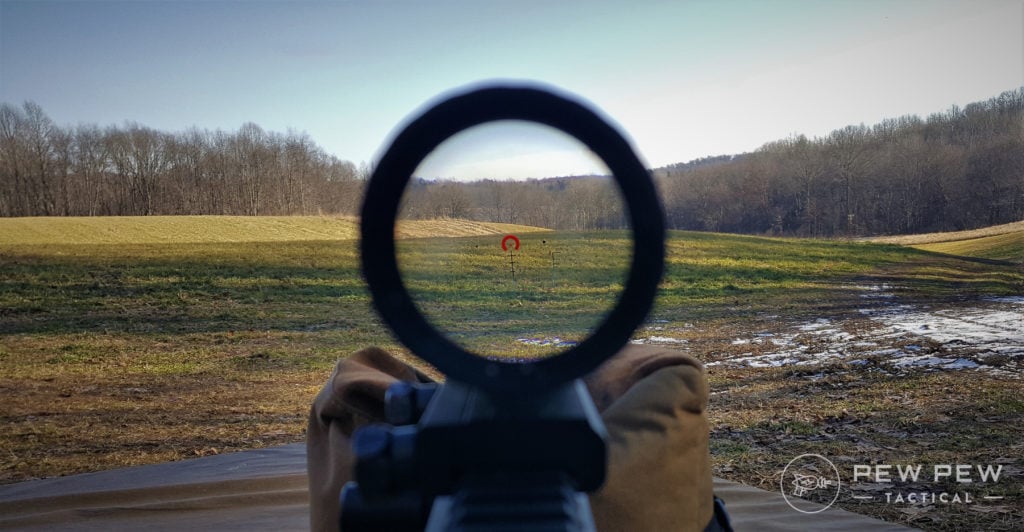
You’ll see a big difference if you look through a 10X LPVO and a 10X regular optic. When you max the magnification on an LPVO, your eye relief and eye box shrinks, and your view gets really narrow.
The demand for a perfect mount on the gun increases even more and can cause you to have some long-range blues.
Final Thoughts
So, are LPVOs bad? No, they aren’t bad. This isn’t an LPVO hate fest.
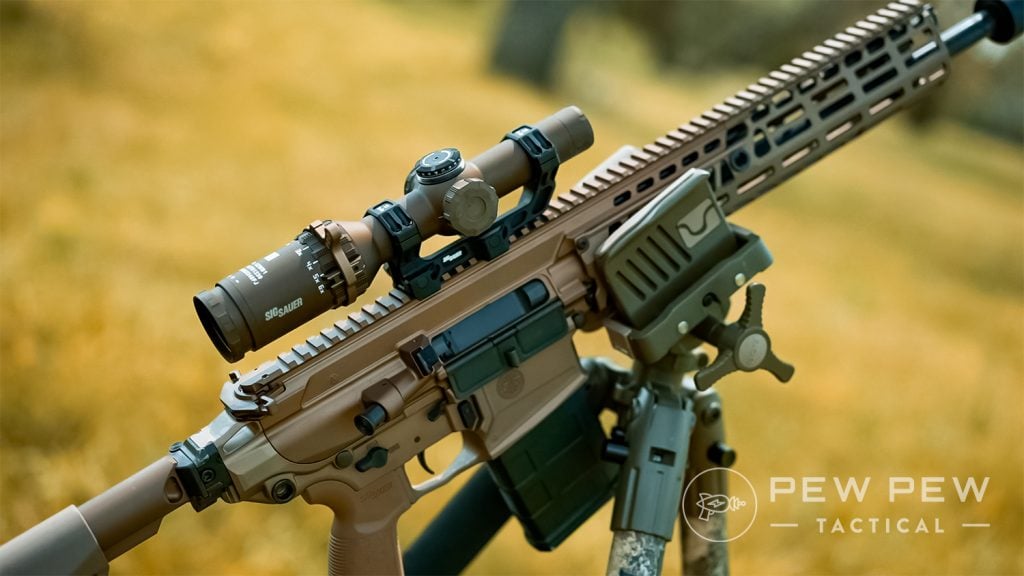
There are plenty of reasons to choose an LPVO. I just think it’s wise to know what you are getting into when it comes to LPVOs before you spend big bucks.
What do you think of LPVOs? Let us know below! We’ve gathered our recommendations for the best of the best in the Best LPVO Scopes.

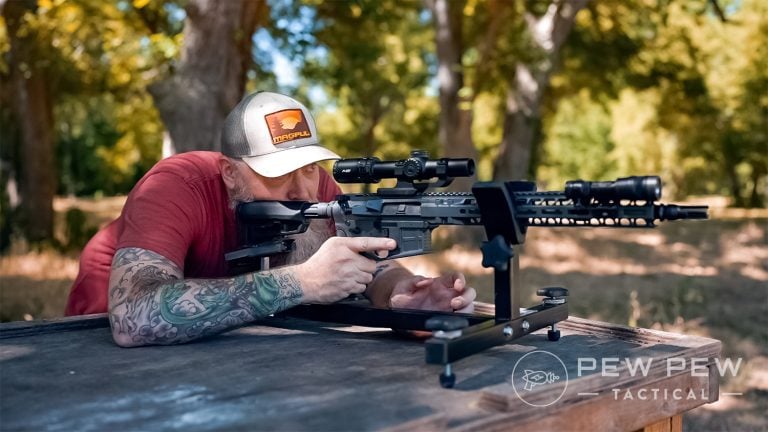
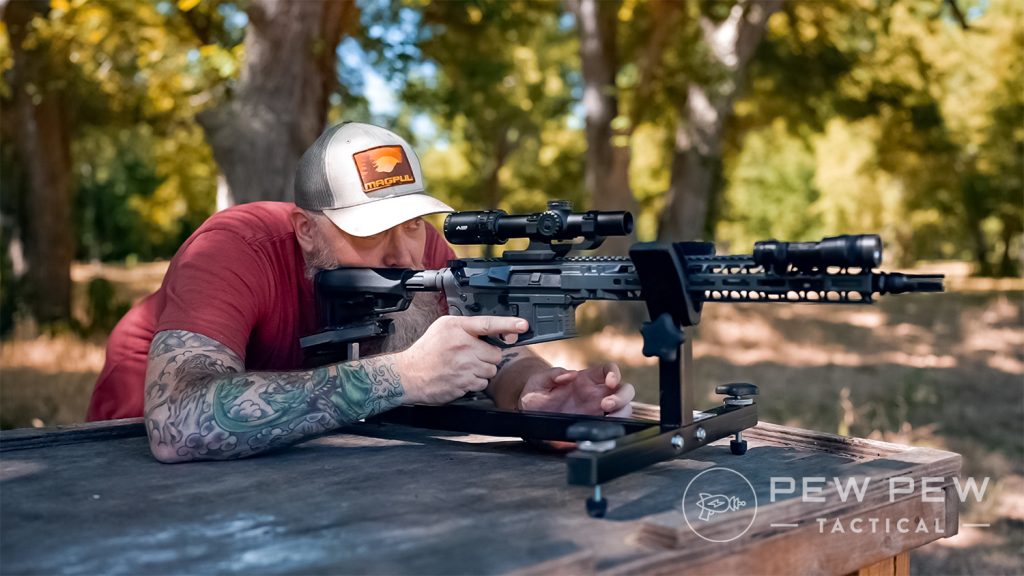









5 Leave a Reply
6.) Drop an LPVO from 6’ and then drop an Eotech with magnifier. Rinse and repeat until one option is no longer useable.
You can solve LVPO issues with a "nock point"; cheek your weapon, note corner of mouth position, place 1/4" rubber dot from foot of small appliance on exact point, cover with camo tape. Then each time you mount correctly when you feel the nock point instantly like an archer...
Just looked it up, the VCOG is 28mm objective
Not sure how your exit pupil calc works for the VCOG? Fine for the Mark 4. but you made a little boo boo or two for the VCOG. You didn't even mention the objective which I believe is 30mm, so neither cal works for the VCOG. But you are a Marine so...
I started with an lvpo on my ar15. After a year, I tried out a red dot and never looked back. So much more fun to shoot. And till 200 yards, magnification is not that crucial